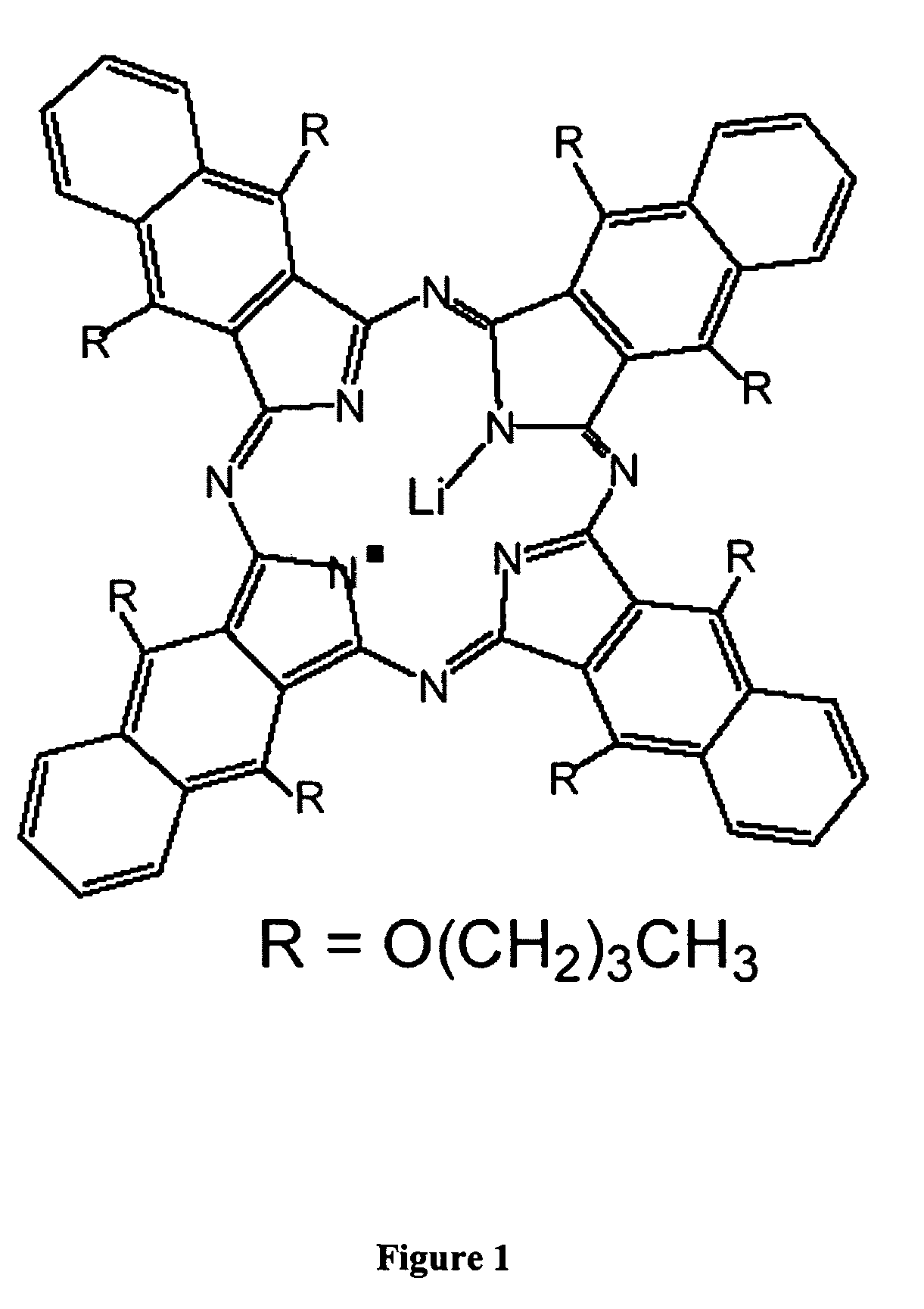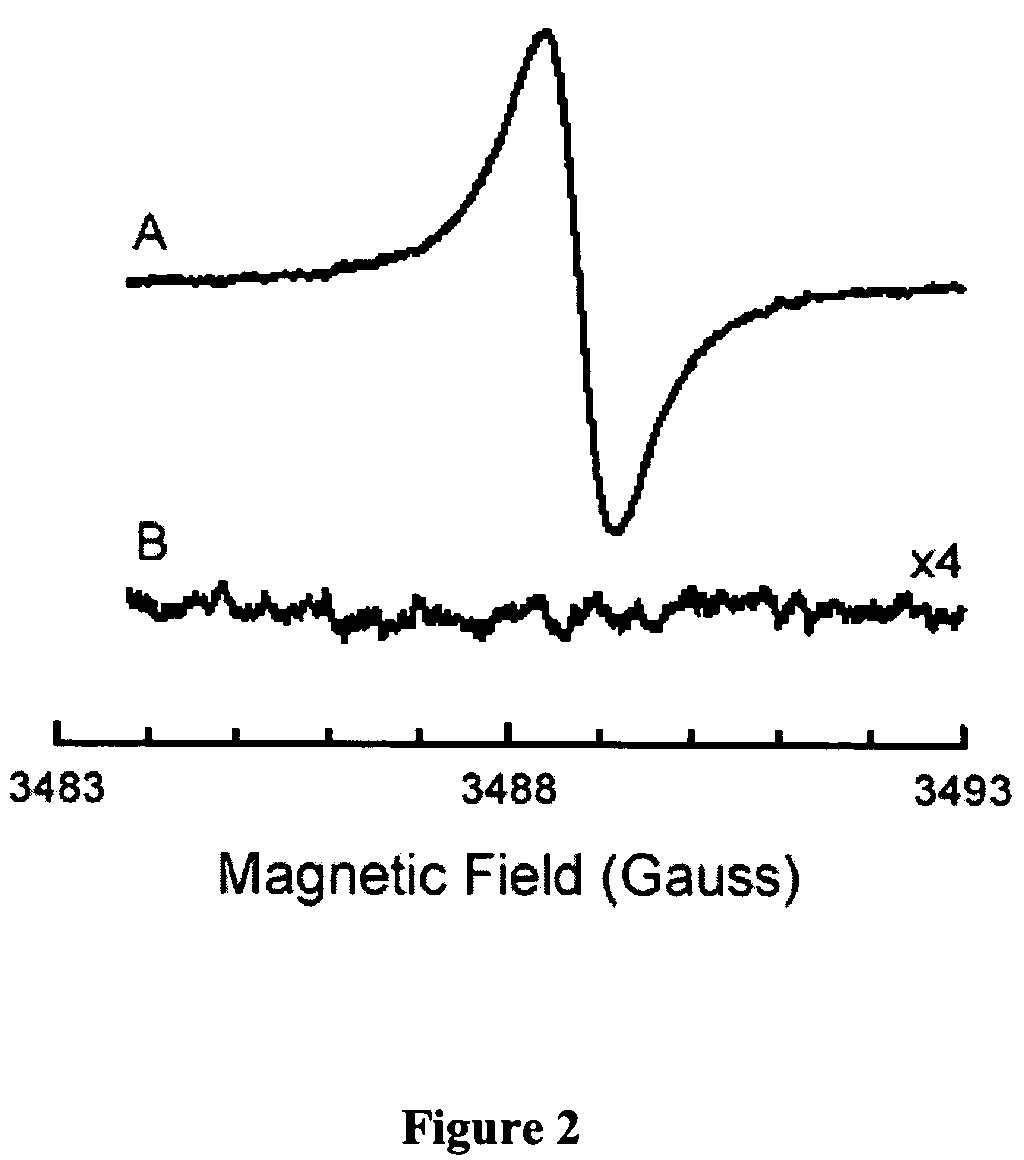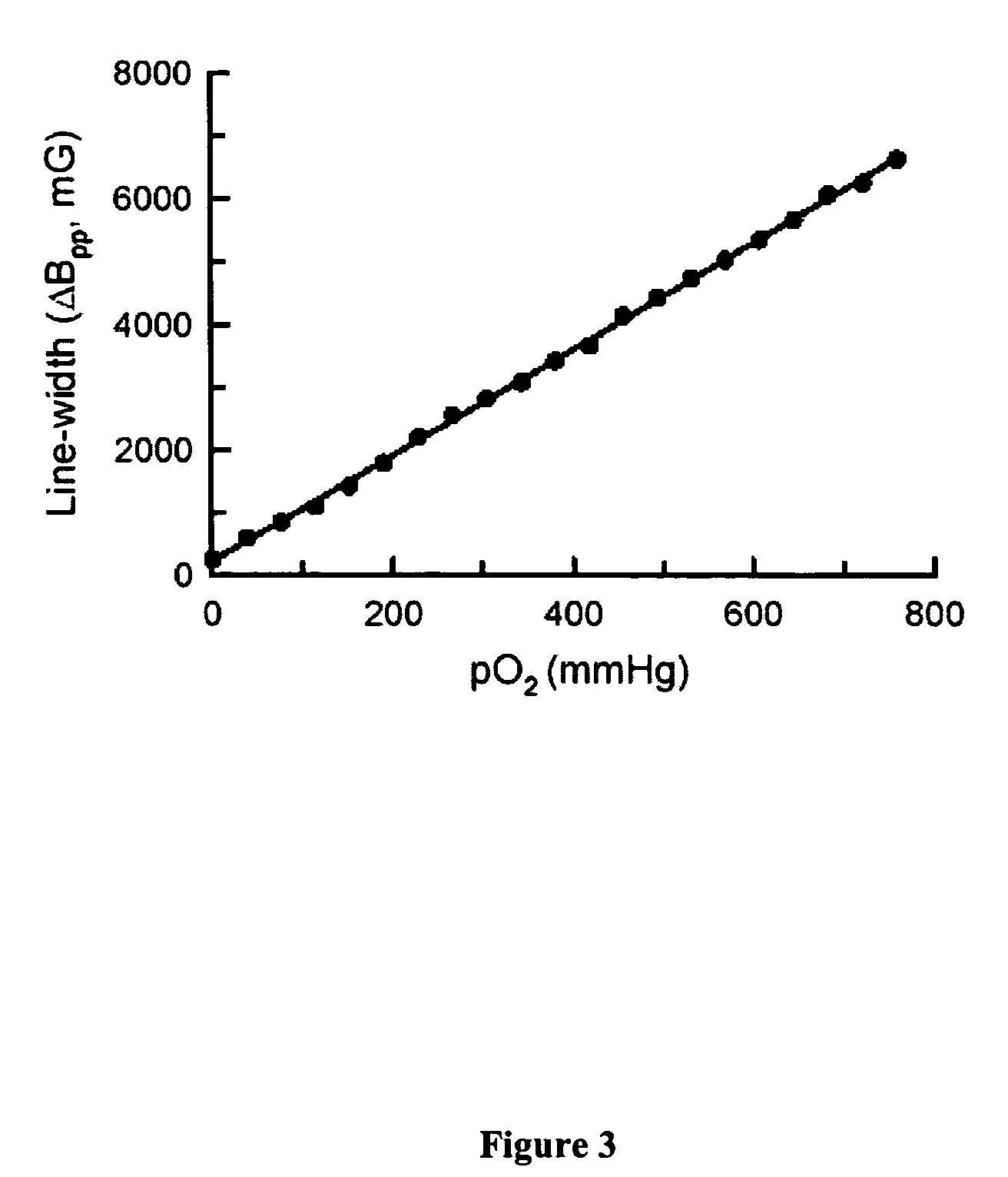Nanoparticulate probe for in vivo monitoring of tissue oxygenation
a tissue oxygenation and nanoparticulate technology, applied in the field of nanoparticulate probes for in vivo monitoring of tissue oxygenation, can solve the problems of insufficient single method for cellular studies, abnormalities in cell growth, differentiation and survival, and disruption of cellular homeostasis
- Summary
- Abstract
- Description
- Claims
- Application Information
AI Technical Summary
Benefits of technology
Problems solved by technology
Method used
Image
Examples
Embodiment Construction
[0044]NMR-based magnetic resonance imaging, MRI, enables visualization of the distribution of nuclear spins, mostly protons, in tissues. It has become a ‘gold standard’ for noninvasive diagnosis of tissue abnormalities. Electron paramagnetic resonance imaging (EPRI) is a parallel technology, which enables visualization of the distribution of electron spins (free radicals) in tissues. EPR is inherently about 3 orders of magnitude more sensitive than NMR. It can directly detect and image relatively stable free radicals as well as labile radicals such as oxygen-derived superoxide and hydroxyl free radicals that are implicated in the pathogenesis of oxidant injury [14-21]. Recently, EPR methods have also been developed to enable detection of nitric oxide [22-24]. In addition, spin probes may be used to image cellular radical metabolism and redox state, membrane structure and fluidity, oxygen, pH, temperature, protein structure, and cell death. With spin labeling of molecules and cells, ...
PUM
| Property | Measurement | Unit |
|---|---|---|
| size | aaaaa | aaaaa |
| size | aaaaa | aaaaa |
| size | aaaaa | aaaaa |
Abstract
Description
Claims
Application Information
 Login to View More
Login to View More - R&D
- Intellectual Property
- Life Sciences
- Materials
- Tech Scout
- Unparalleled Data Quality
- Higher Quality Content
- 60% Fewer Hallucinations
Browse by: Latest US Patents, China's latest patents, Technical Efficacy Thesaurus, Application Domain, Technology Topic, Popular Technical Reports.
© 2025 PatSnap. All rights reserved.Legal|Privacy policy|Modern Slavery Act Transparency Statement|Sitemap|About US| Contact US: help@patsnap.com



